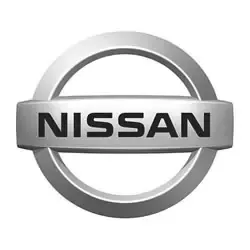Nissan Altima Tire Pressure
Most common recommended tire pressure for Nissan Altima can range from 32 psi to 33 psi depending on year of production, trim and OEM tire size, but it maybe different for older models. It is imperative to confirm the exact tire inflation for your Nissan Altima to ensure safety on the road. Always refer to your vehicle owner's manual for the correct tire pressure designated by vehicle's manufacturer.
Select your Nissan Altima production year to see its recommended tire inflation.
| Model Year | Front Tires | Rear Tires |
|---|---|---|
| 2025 Nissan Altima | 32 - 33 psi | 32 - 33 psi |
| 2024 Nissan Altima | 32 - 33 psi | 32 - 33 psi |
| 2023 Nissan Altima | 32 - 33 psi | 32 - 33 psi |
| 2022 Nissan Altima | 32 - 33 psi | 32 - 33 psi |
Recommended Tire Pressure for Nissan Altima
Maintaining the recommended tire pressure for a Nissan Altima is crucial for several reasons, directly impacting safety, fuel efficiency, and the longevity of the tires themselves. Properly inflated tires ensure optimal contact with the road, enhancing the vehicle's handling and stability, particularly in adverse weather conditions or during evasive maneuvers, thereby reducing the risk of accidents. Moreover, tires inflated to the manufacturer's recommended pressure offer less rolling resistance, which translates to improved fuel economy. This means that by simply keeping the tires at the correct pressure, drivers can achieve better miles per gallon, leading to significant savings on fuel costs over time. Additionally, tires that are maintained at the correct pressure wear more evenly and are less prone to premature wear and failures, such as blowouts or tread separation, extending the lifespan of the tires and avoiding the need for early replacement. For the Nissan Altima, adhering to the specific tire pressure guidelines provided in the owner's manual or on the tire information placard located on the driver's side door frame is particularly important, as these figures are determined by the vehicle's manufacturer to optimize performance and safety based on the vehicle's design and weight distribution. Routinely checking and adjusting tire pressure, therefore, is a simple yet effective maintenance step that can lead to a safer, more economical, and enjoyable driving experience.

All listed guides, data and/or calculations are for informational purposes only. TirePressure.com does not warrant or make any representations regarding the accuracy of or the results of the use of this information. Always refer to vehicle owner's manual for the correct tire pressure configuration.